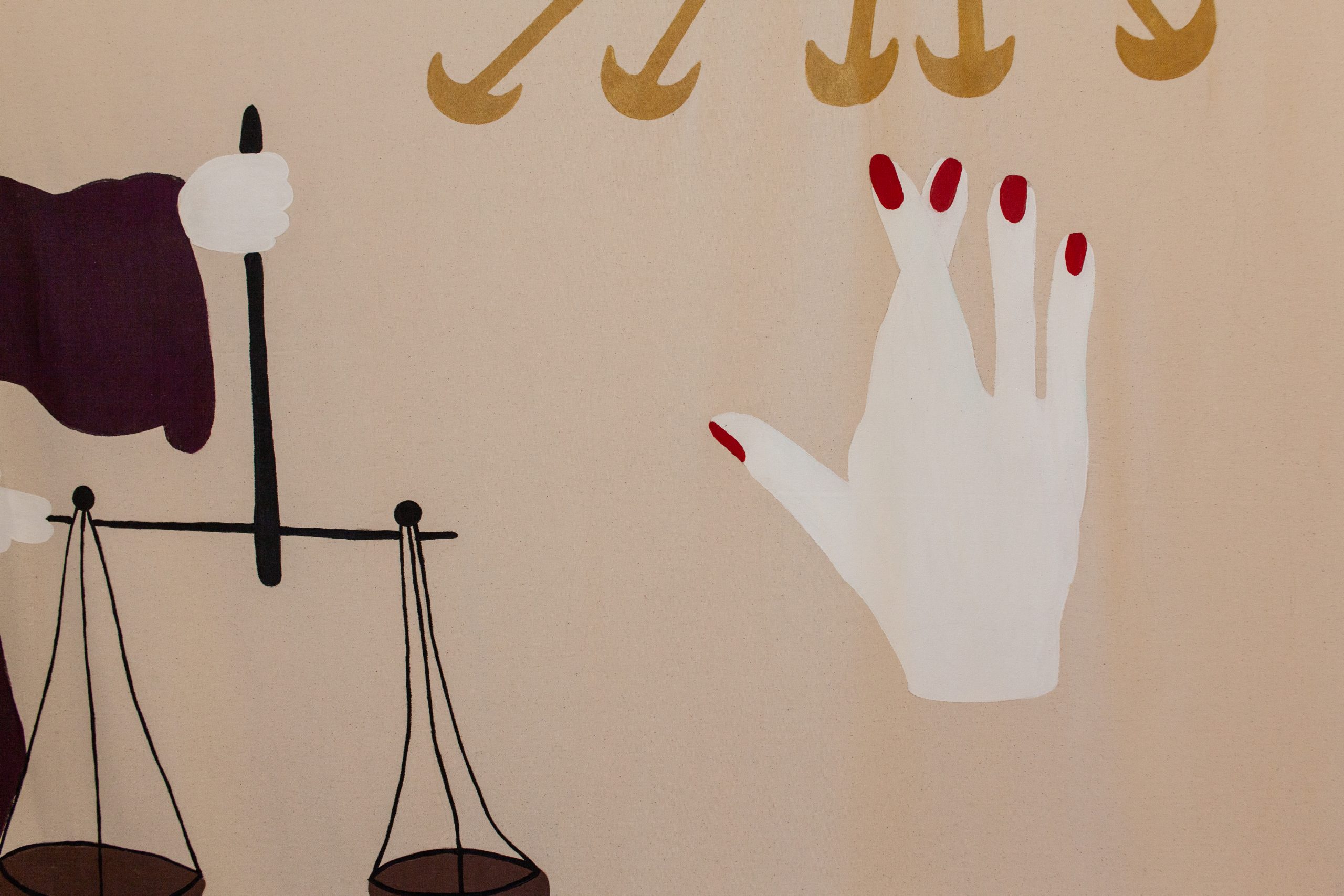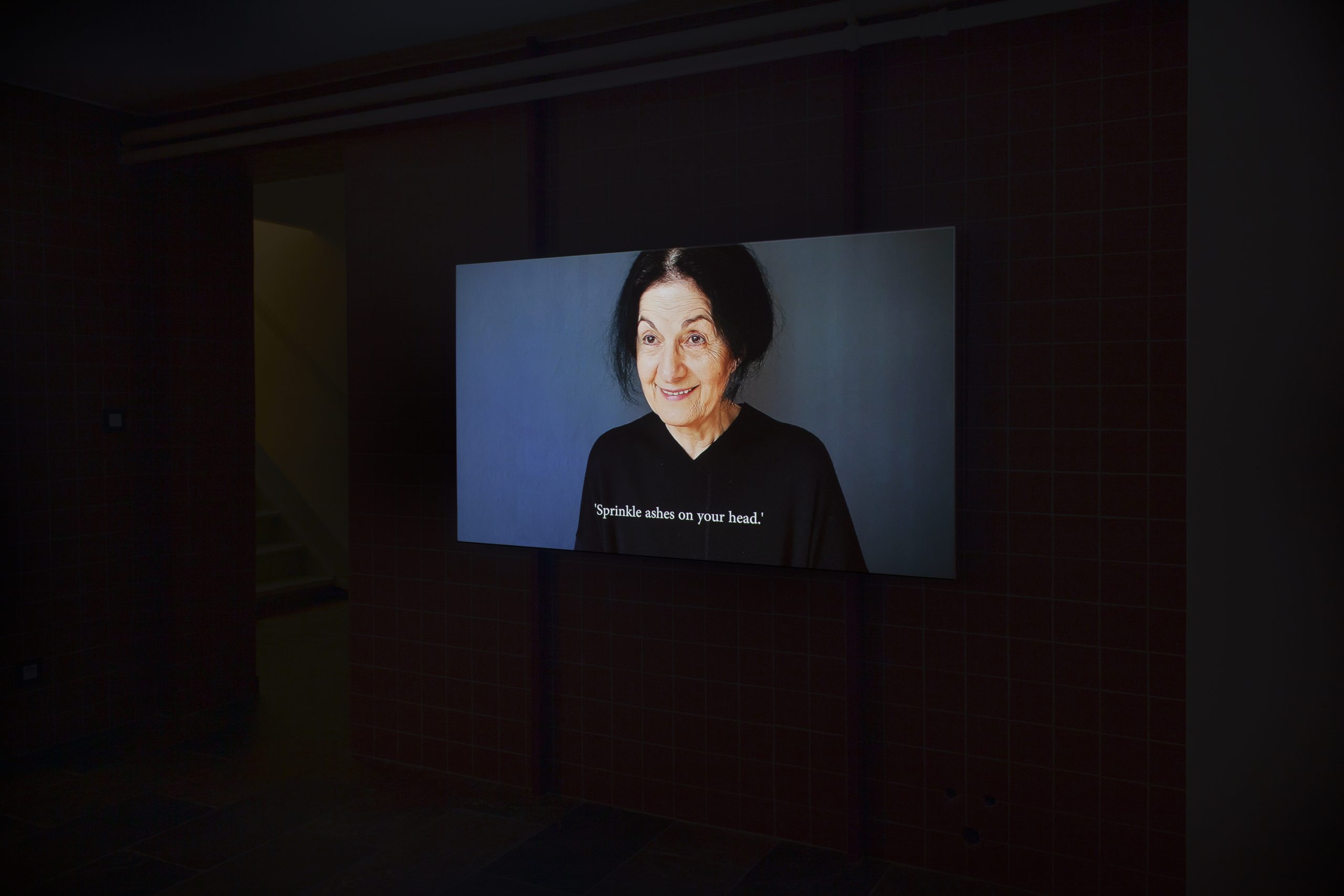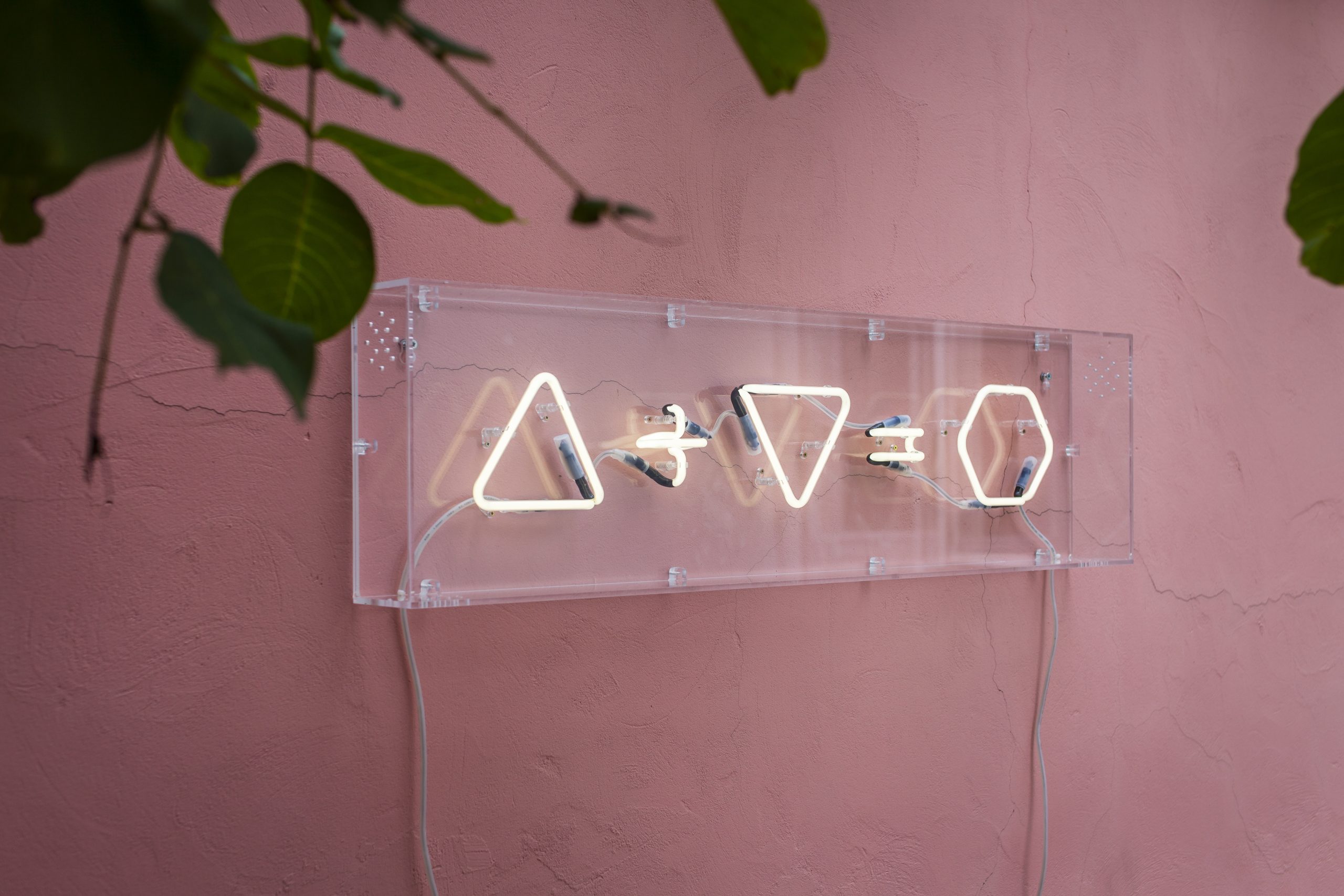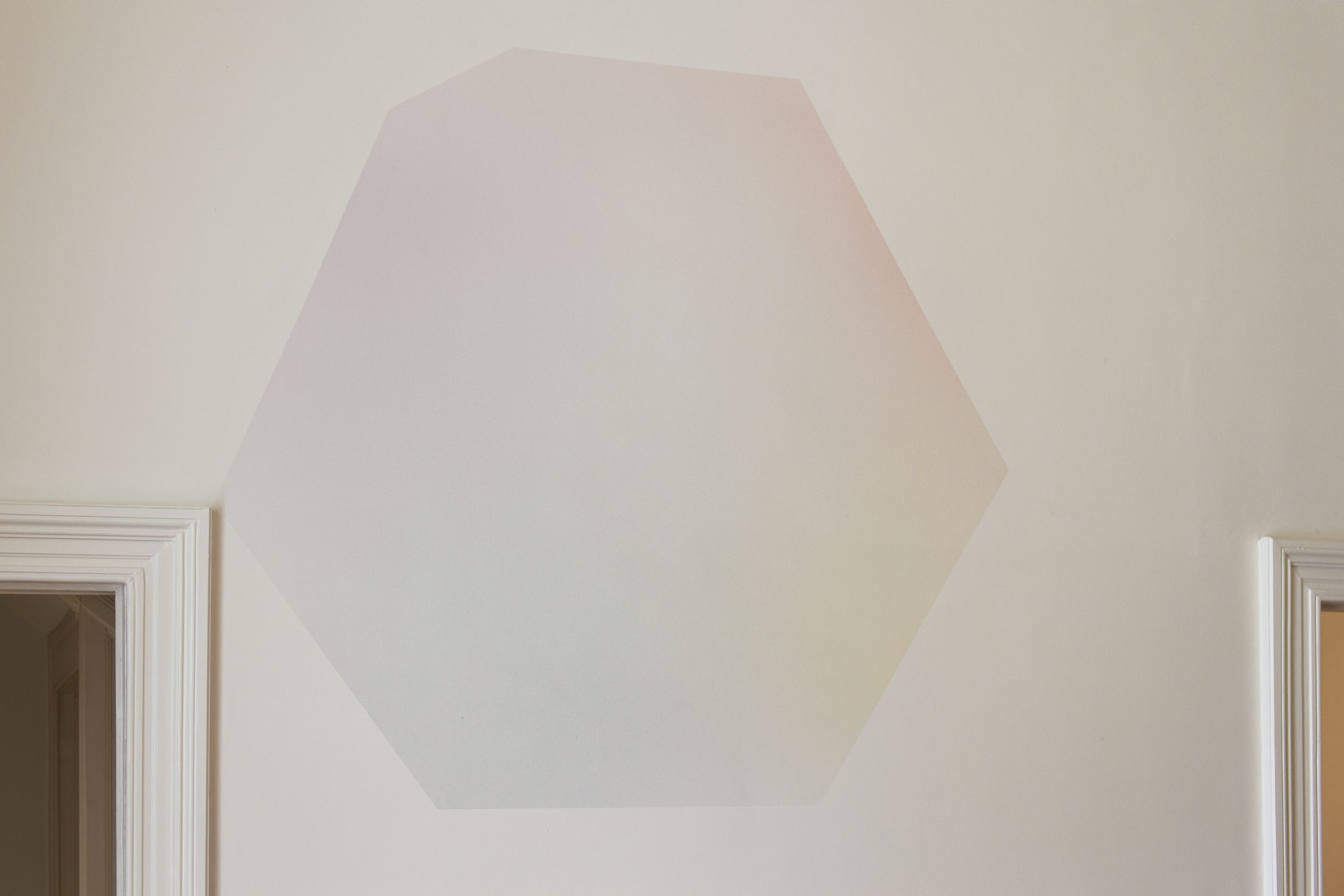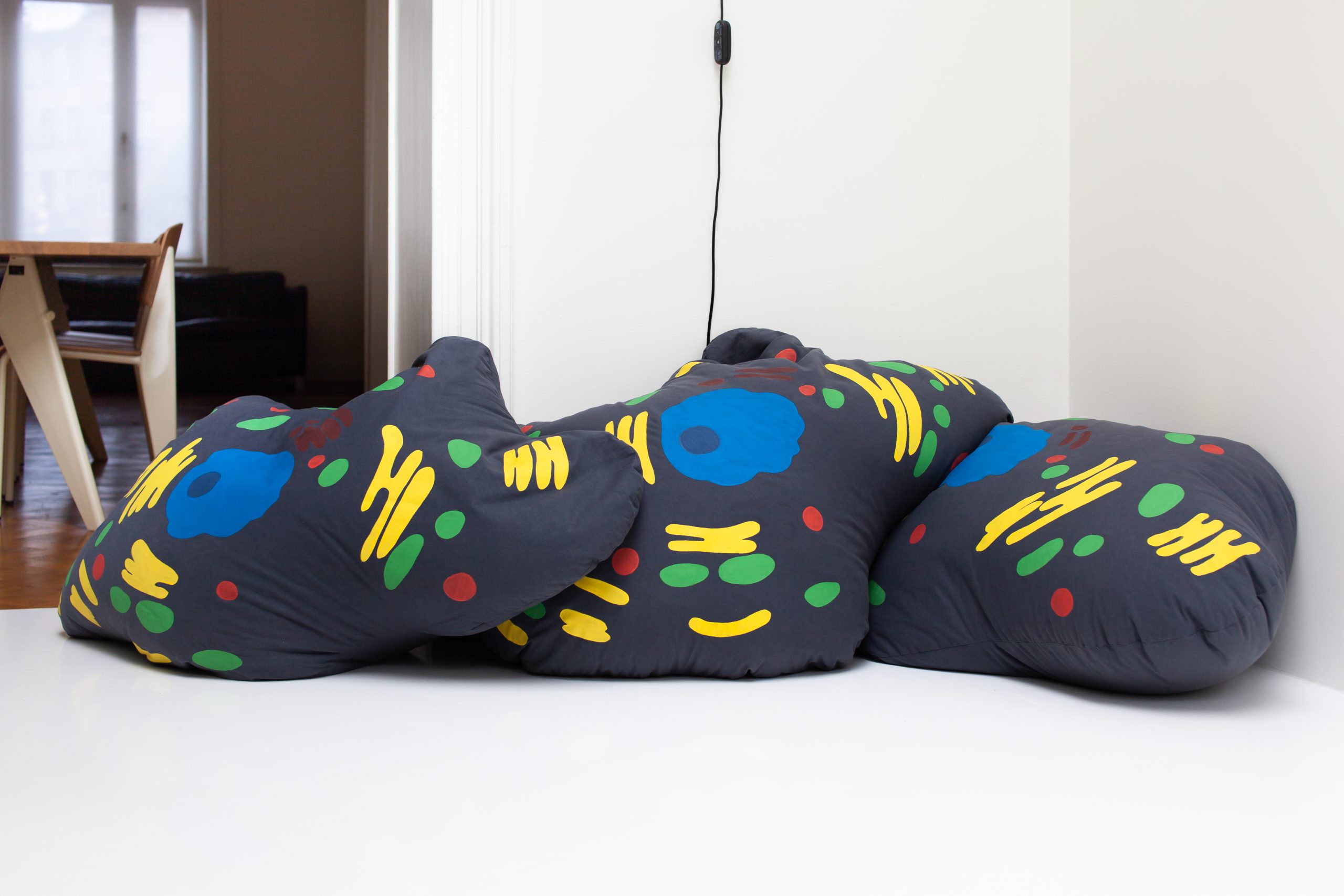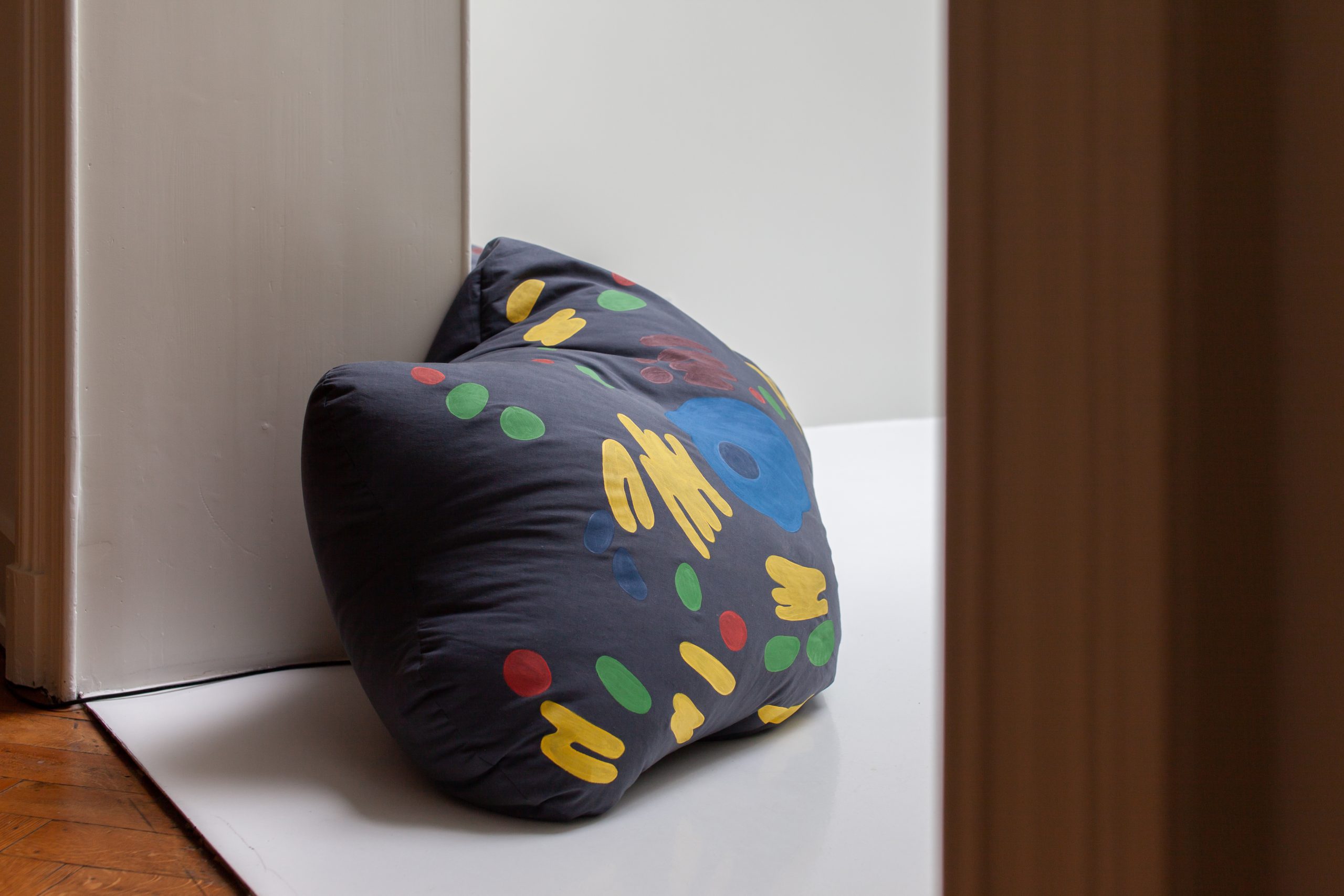BEIGE BRUSSELS is delighted to present its inaugural exhibition I Love Today, I Can’t Wait for Tomorrow. The exhibition showcases works by 4 artists: Laurie Charles, Chris Goennawein, Meggy Rustamova and Kato Six.
Laurie Charles’ (1987, Brussels) work draws on folklores, alternative medicine and histories with narrative and speculative fiction. Charles’ textile work Pharmakon, 2019, interprets a herstory of medicine. The symbols draw on mythological and historical stories of female health and healing: The moon represents the lunar cycle, which is closely linked to the menstrual cycle; the bowl with the snake refers to the pharmacy sign; the image of the hand with red-painted nails is linked to the healing power of the laying on of hands; ginger, spoons, scales, and herbs are all known as medical aiding instruments. They illustrate Charles’ interest for witchcraft, wellness, (female) health and illness.
The interdisciplinary oeuvre of Meggy Rustamova (1985, Tbilisi) consists of photographic works, videos, installations and performances. During her extensive travels Rustamova is often inspired by nature and the landscape in relation to the human presence, as one can tell from the photographic works Headlights and Rock Formation. Her work also offers a poetic look at the relationship between individual and collective memory, between language as communication and visual vocabulary. She searches for ways to translate contemporary social tendencies and issues into her own work, often by means of microhistories. Her latest film Babel shows the artist’s mother recalling Assyrian words. As she remembers some words, she is unable to cite everything. It talks about language and migration but also of memory or dementia, as she often explores the thin line between fact and fiction.
In her artistic research Kato Six (1986, Bruges) uses familiar material culture to reconfigure the ways we make ourselves at home in the world. She creates a poetic dialogue between a domestic space and a more formal environment. The sculpture Outer Hebrides, 2020, is based on a photograph the artist took while visiting one of Scotland’s outer islands. In resemblance to architectural practice she extracts the experience of landscape from its original form. In the Outer Hebrides / Dust, 2020, which relates to the sculpture, Six explores how far one can push a material until it goes beyond its conventional limits. Colored mdf plates are sanded and through static electricity fixed on the wall. The fragility of the work gives it a poetic status and raises questions about temporality, disintegration and decay.
The work of Chris Goennawein (1979, Heidelberg) is marked by a specific graphic precision. It is severe yet playful. A play on words is a recurrent theme throughout his oeuvre. The diptych Tabula Rasa Rasa Tabula, 2020, is a fine example of the interchangeability between words and images. He actives the viewer’s imagination while being economical with images. The neon illustrates a functional and alternative way to view the world around us.

